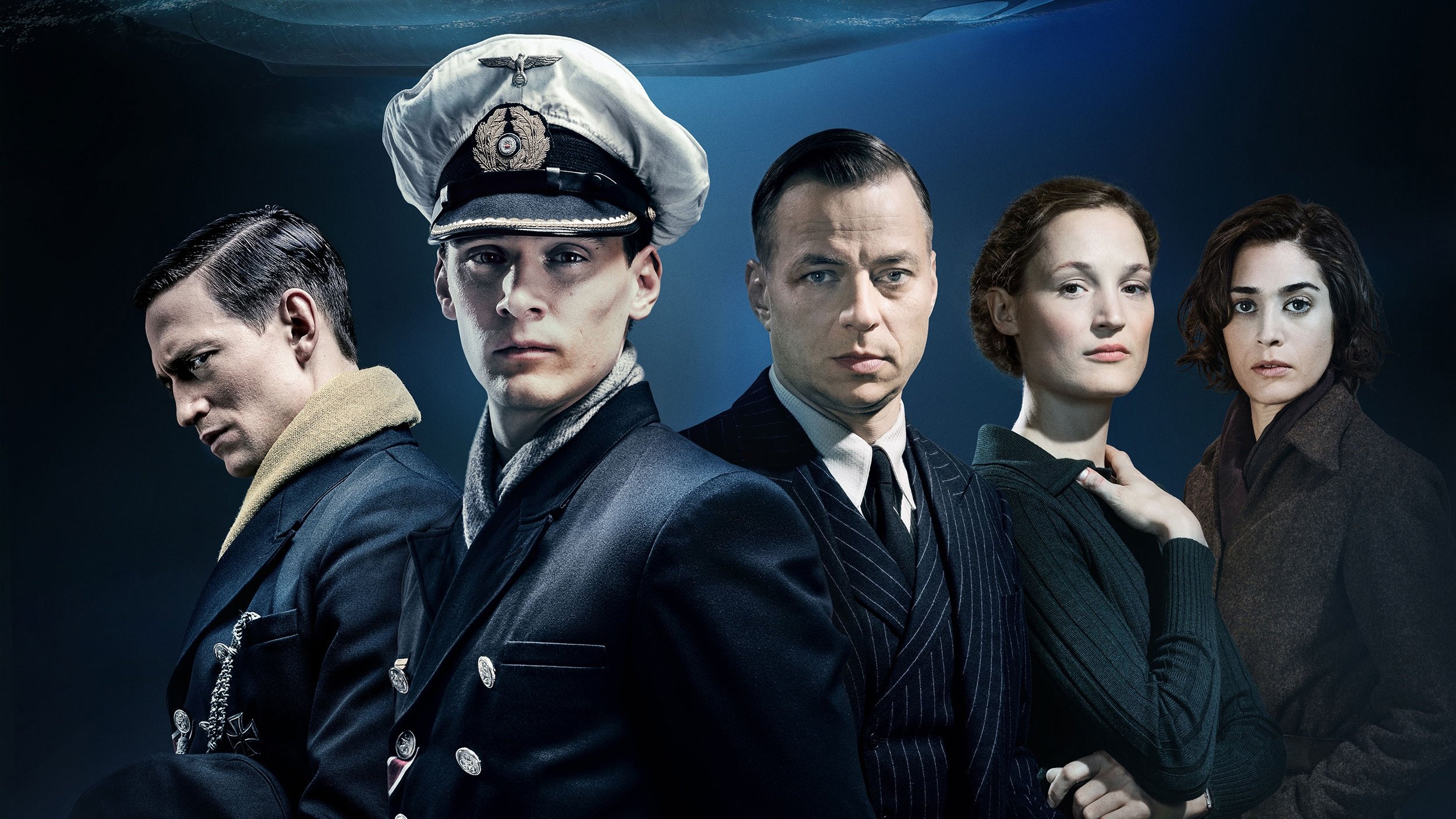Das Boot - Season 3
Das Boot takes on the allure of a full-fledged war series that goes far beyond the original submarine story. The third season of Das Boot continues on the same path, but the playing field is further expanded. In this season, only three characters from the previous episodes return and many new ones are introduced. The action on land this time takes place in Nazi Germany, Great Britain and neutral Portugal.
In Kiel (Germany) we find chief engineer Robert Ehrenberg. The highest-ranking U-822 returning from season two now works there as a Kriegsmarine inspector. He checks the newly delivered submarines and assesses the seaworthiness of both the boat and the crew. His cushy job is compensation for his silence about the events of the previous season.
The fact that the Nazis do not spare their own population becomes apparent when a few caught young thieves are given the choice between castration or enlistment as a sailor. Because of the losses, the regime is deploying more and more young soldiers and sailors. When the recent graduate Franz Buchner takes command of U-949, his crew has no confidence in his leadership. The regime, however, presses on. The uncertainty of the commander already causes the necessary problems during the first sea trial. Unable to watch it all, Ehrenberg finally decides to quit his fancy job and board U-949 for the first mission.
The images from Kiel give a good picture of everyday life in Nazi Germany during the war. The civilian population suffers from the bombings and shortages. Fallen or returning war invalids cause drama. All this is in stark contrast to the opulence in which the arrogant Nazi elite lives. In Kiel, we also meet Klaus Hoffman's father, sister, and brother-in-law. Due to his supposed betrayal, his family has lost much influence and is distrusted by the regime. Klaus himself is still looking for an opportunity to return to Germany to prove that he is not a traitor.
British captain Jack Swinburn is deeply traumatized by the death of his son. His ship was sunk by a German U-boat and Swinburn is determined to kill as many Germans as possible and to sink U-boats. As a result, he does not care about the rules and dares to take irresponsible risks. As in the case of Captain Wrangel, part of the crew supports him. Others, like his first officer, resist but are forced to close their eyes.
[image-217287]
As in the previous seasons, Das Boot takes place largely on land and the real submarine scenes are limited. Yet these scenes remain a crucial element in the whole. We experience how a bunch of irregulars, who would rather see each other dead than alive, are transformed during their first mission into a close-knit block of friends who go through fire for each other. Life during the wartime of the 1940s is portrayed very authentically in this series. The streets, buildings, clothing and vehicles all feel convincing. The fact that some actions or events are historically incorrect does not detract from the quality and suspense of the series. In between this season, some Japanese pop up here and there, so that all the important parties from this great conflict are now present. Das Boot, therefore, takes on the allure of a full-fledged war series that goes much further than the original submarine story.
Very cleverly, the screenwriters manage to bring the different storylines together in a grand finale that opens the way to the fourth season. The fourth season has already been filmed. It seems that the screenwriters of Das Boot are far from finished.
In Kiel (Germany) we find chief engineer Robert Ehrenberg. The highest-ranking U-822 returning from season two now works there as a Kriegsmarine inspector. He checks the newly delivered submarines and assesses the seaworthiness of both the boat and the crew. His cushy job is compensation for his silence about the events of the previous season.
The fact that the Nazis do not spare their own population becomes apparent when a few caught young thieves are given the choice between castration or enlistment as a sailor. Because of the losses, the regime is deploying more and more young soldiers and sailors. When the recent graduate Franz Buchner takes command of U-949, his crew has no confidence in his leadership. The regime, however, presses on. The uncertainty of the commander already causes the necessary problems during the first sea trial. Unable to watch it all, Ehrenberg finally decides to quit his fancy job and board U-949 for the first mission.
The images from Kiel give a good picture of everyday life in Nazi Germany during the war. The civilian population suffers from the bombings and shortages. Fallen or returning war invalids cause drama. All this is in stark contrast to the opulence in which the arrogant Nazi elite lives. In Kiel, we also meet Klaus Hoffman's father, sister, and brother-in-law. Due to his supposed betrayal, his family has lost much influence and is distrusted by the regime. Klaus himself is still looking for an opportunity to return to Germany to prove that he is not a traitor.
Gestapo man Hagen Forster arrives in Lisbon. He has been called in to investigate the murder of a German embassy employee. The victim was involved in negotiations for the delivery of a batch of tungsten. An agreement of vital importance for Nazi Germany. Portugal is a neutral country and there is no war in Lisbon. No air raid alarms or blackouts and the bars and nightclubs are open during the night. The city is alive, but it is crawling with spies. Forster is acting more like a lovable James Bond than a Gestapo bloodhound this season. He also finds it increasingly difficult to defend Nazi doctrine to others.It seems that the screenwriters of Das Boot are far from finished.
British captain Jack Swinburn is deeply traumatized by the death of his son. His ship was sunk by a German U-boat and Swinburn is determined to kill as many Germans as possible and to sink U-boats. As a result, he does not care about the rules and dares to take irresponsible risks. As in the case of Captain Wrangel, part of the crew supports him. Others, like his first officer, resist but are forced to close their eyes.
[image-217287]
As in the previous seasons, Das Boot takes place largely on land and the real submarine scenes are limited. Yet these scenes remain a crucial element in the whole. We experience how a bunch of irregulars, who would rather see each other dead than alive, are transformed during their first mission into a close-knit block of friends who go through fire for each other. Life during the wartime of the 1940s is portrayed very authentically in this series. The streets, buildings, clothing and vehicles all feel convincing. The fact that some actions or events are historically incorrect does not detract from the quality and suspense of the series. In between this season, some Japanese pop up here and there, so that all the important parties from this great conflict are now present. Das Boot, therefore, takes on the allure of a full-fledged war series that goes much further than the original submarine story.
Very cleverly, the screenwriters manage to bring the different storylines together in a grand finale that opens the way to the fourth season. The fourth season has already been filmed. It seems that the screenwriters of Das Boot are far from finished.
About the writer, Karzal
Mike (1995) has been a member of MySeries since 2016 and is mainly active on the English version of the site. Since 2018, he has been actively translating news articles, columns, reviews and basically everything that ends up on the Dutch site. The original articles, columns and reviews were actually written by others. During the week Mike can be found at IKEA, where he is a national systems specialist and occasionally also in the classroom to teach an English lesson. In addition, Mike logically enjoys watching series and has actually been spoon-fed this from an early age. The genre doesn't matter, there is a place for everything in the otherwise busy life.
View profile of Karzal




